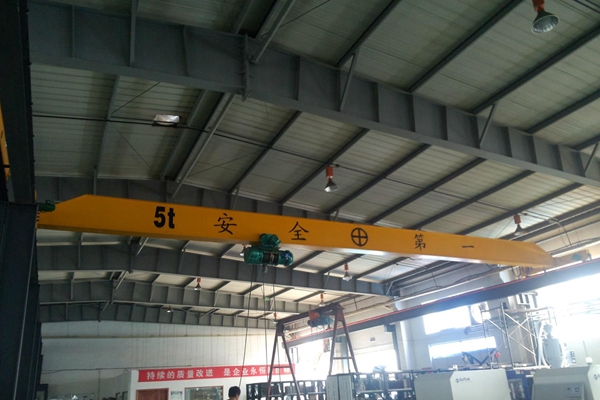If you are getting ready to purchase an overhead crane, you may be trying to decide between a single girder crane and a double girder crane. Although each style has advantages and disadvantages, you may want to consider going with a single girder overhead crane. Here are just a few of the advantages that they offer.
1. Lower price. It goes without saying that single girder overhead cranes typically cost less than double girder cranes. When you think about it, it makes sense. After all, by eliminating one of the girders, far fewer materials are required to complete the design. Additionally, trolleys that are designed for single girder cranes are much simpler than those that are designed for double girder cranes. Again, this can help reduce the overall purchase price, making these cranes an economical option.
2. Lighter weight. By eliminating the second girder and much of the support structure required for a double girder crane, single girder models are much lighter weight. This can help reduce the structural support requirements for your building.
3. Less expensive installation. Thanks to their relatively light weight and minimalistic design, single girder cranes tend to be far cheaper to install. Oftentimes, there is no need to add additional structural support to the building in order to support the weight of the crane. The same can’t be said for double girder cranes, many of which are extremely heavy and require additional support. With a single girder crane, not only are you saving money on the cost of the crane itself but also on the cost of the installation. That is why these cranes are such a good choice for businesses that are working with limited budgets.
Of course, there are some downsides to these cranes as well. For instance, the trolley on single girder cranes tends to hang lower than on double girder cranes, simply because it is attached to the bottom of the girder rather than being mounted between two girders. This can make these cranes a poor choice for facilities that don’t have a lot of headroom. In fact, most trolleys that are designed for low headroom applications are attached to double girder cranes, simply because the design of these cranes minimizes how far they hang down into the building.
Single girder cranes also may not be appropriate for extremely long spans. They generally work best when used in relatively small buildings where they don’t have to cover an extensive span of space. For wider buildings, double girder cranes may be more appropriate.
All in all, however, single girder cranes offer a number of advantages. By carefully weighing the pros and cons of each type of crane, you should be able to choose the perfect model for your facility. If you have any questions or concerns about purchasing one of these cranes, don’t hesitate to reach out to a professional at a company that sells them for advice. That way, you can be sure that the crane you are buying is appropriate for your facility and for the work that you want to use it for.
